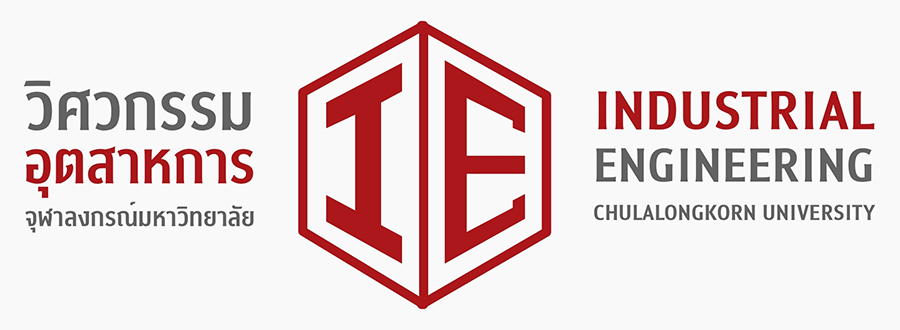- Home
- /
- โอฬาร กิตติธีรพรชัย

รศ. ดร.โอฬาร กิตติธีรพรชัย
- 6th Floor of Engineering 4 Bldg., Room 603
- +66-2218-7881
- oran.k@chula.ac.th
Overview
I am an associate professor in the Department of Industrial Engineering at Chulalongkorn University. My research interests are large scale logistics system, warehousing systems, supply chain management, computational algorithm, and applied optimization.
Education
Ph.D., Industrial and Systems Engineering
Georgia Institute of Technology, United States, 2009
M.Sci., Industrial and Systems Engineering
Georgia Institute of Technology, United States, 2003
B.Eng, Industrial Engineering
Chulalongkoran University, Thailand, 1999
Expertise
Engineering Management
Publications
2024
Pana Chinajitphan, Oran Kittithreerapronchai
Implementation of good distribution practice in a Thai pharmaceutical manufacturer Journal Article
In: Science, Engineering and Health Studies, vol. 18, 2024, (Cited by: 0; All Open Access, Hybrid Gold Open Access).
@article{Chinajitphan2024,
title = {Implementation of good distribution practice in a Thai pharmaceutical manufacturer},
author = {Pana Chinajitphan and Oran Kittithreerapronchai},
url = {https://www.scopus.com/inward/record.uri?eid=2-s2.0-85212529083&doi=10.69598%2fsehs.18.24040003&partnerID=40&md5=667515602185f1355312d522b8705608},
doi = {10.69598/sehs.18.24040003},
year = {2024},
date = {2024-01-01},
journal = {Science, Engineering and Health Studies},
volume = {18},
note = {Cited by: 0; All Open Access, Hybrid Gold Open Access},
keywords = {},
pubstate = {published},
tppubtype = {article}
}
Supanat Pararug, Jittima Chatchawalsaisin, Oran Kittithreerapronchai
Robust design space of compression parameters for initial and reprocessed granules Journal Article
In: Journal of Drug Delivery Science and Technology, vol. 98, 2024, (Cited by: 0).
@article{Pararug2024,
title = {Robust design space of compression parameters for initial and reprocessed granules},
author = {Supanat Pararug and Jittima Chatchawalsaisin and Oran Kittithreerapronchai},
url = {https://www.scopus.com/inward/record.uri?eid=2-s2.0-85197078699&doi=10.1016%2fj.jddst.2024.105888&partnerID=40&md5=beb495dd263205a80a0aa929adbdf3a6},
doi = {10.1016/j.jddst.2024.105888},
year = {2024},
date = {2024-01-01},
journal = {Journal of Drug Delivery Science and Technology},
volume = {98},
note = {Cited by: 0},
keywords = {},
pubstate = {published},
tppubtype = {article}
}
Thanapatr Chitsrisakda, Parames Chutima, Arisara Jiamsanguanwong, Oran Kittithreerapronchai
Association for Computing Machinery, 2024, ISBN: 979-840071713-0, (Cited by: 1).
@conference{Chitsrisakda2024371,
title = {Application of the NSGA-III algorithm to investigate the Cobot assembly line balancing problem with disabled workers},
author = {Thanapatr Chitsrisakda and Parames Chutima and Arisara Jiamsanguanwong and Oran Kittithreerapronchai},
url = {https://www.scopus.com/inward/record.uri?eid=2-s2.0-85202770712&doi=10.1145%2f3664968.3666115&partnerID=40&md5=8941551992234dff90b0d0709492afcf},
doi = {10.1145/3664968.3666115},
isbn = {979-840071713-0},
year = {2024},
date = {2024-01-01},
journal = {ACM International Conference Proceeding Series},
pages = {371 – 379},
publisher = {Association for Computing Machinery},
abstract = {Analyzing the assembly line balancing problem with cobots on parallel adjacent assembly lines is the main objective of this research. On the assembly line, human workers and robots, or cobots, are permitted to work in parallel or independently. There are two categories of workers in the assembly lines: workers without disabilities and workers with disabilities. Workstations are assigned jobs, workers, and cobots in order to accomplish system-, human-, and robot-related goals. The well-known evolutionary methodology of the Non-dominated Sorting Genetic Algorithm (NSGA-III) is utilised to identify optimal solutions because the problem is NP-hard. Workers with disabilities exist, thus their effects on the system's objectives are examined. It has been shown that how workers with disabilities have a substantial effect on assembly line efficiency. © 2024 Owner/Author.},
note = {Cited by: 1},
keywords = {},
pubstate = {published},
tppubtype = {conference}
}
2023
Oran Kittithreerapronchai, Patarapun Aungatichart, Nan Boonyachut
Improving Utilization of On-Site Physical Examination: An Electronic Factory Study Conference
vol. 35, 2023, (Cited by: 0; All Open Access, Gold Open Access).
@conference{Kittithreerapronchai2023586,
title = {Improving Utilization of On-Site Physical Examination: An Electronic Factory Study},
author = {Oran Kittithreerapronchai and Patarapun Aungatichart and Nan Boonyachut},
url = {https://www.scopus.com/inward/record.uri?eid=2-s2.0-85173440299&doi=10.3233%2fATDE230085&partnerID=40&md5=3b616a845480fe1e105b9e3c2e45edc4},
doi = {10.3233/ATDE230085},
year = {2023},
date = {2023-01-01},
journal = {Advances in Transdisciplinary Engineering},
volume = {35},
pages = {586 – 596},
note = {Cited by: 0; All Open Access, Gold Open Access},
keywords = {},
pubstate = {published},
tppubtype = {conference}
}
Chanatip Thongdonnoi, Parames Chutima, Arisara Jiamsanguanwong, Oran Kittithreerapronchai, Manida Swangnetr Neubert
Application of Collaborative Robots for Increasing Productivity in an Eyeglasses Lenses Manufacturer Journal Article
In: Engineering Journal, vol. 27, no. 10, pp. 93 – 112, 2023, ISSN: 01258281, (Cited by: 2; All Open Access, Gold Open Access, Green Open Access).
@article{Thongdonnoi202393,
title = {Application of Collaborative Robots for Increasing Productivity in an Eyeglasses Lenses Manufacturer},
author = {Chanatip Thongdonnoi and Parames Chutima and Arisara Jiamsanguanwong and Oran Kittithreerapronchai and Manida Swangnetr Neubert},
url = {https://www.scopus.com/inward/record.uri?eid=2-s2.0-85176564994&doi=10.4186%2fej.2023.27.10.93&partnerID=40&md5=1468211c0a610031cb1d733f3ae0e50e},
doi = {10.4186/ej.2023.27.10.93},
issn = {01258281},
year = {2023},
date = {2023-01-01},
journal = {Engineering Journal},
volume = {27},
number = {10},
pages = {93 – 112},
publisher = {Chulalongkorn University, Faculty of Fine and Applied Arts},
abstract = {This research focuses on a framework for making decisions when adopting collaborative robots (cobots) to collaborate with or replace human workers. Top management at a real-life case study firm that manufactures a variety of eyeglasses lenses wants to implement cobots in the sorting process since such a repetitive task has been shown to have a significant negative influence on workers' ergonomic ailments. Its current procurement decision-making process focuses solely on financial perspectives without taking into account any other significant criteria. Therefore, the purpose of this study is to investigate the elements that are crucial in deciding whether to use cobots in manufacturing lines., Multivariate statistical methods, comprising the exploratory factor analysis (EFA) and confirmatory factor analysis (CFA), are applied to analyse the elements that are associated with the latent variables such as safety, ergonomics, productivity, quality, system, internal organisation and external organisation. In addition, alternative deployments of cobots in the case study are validated through the ARENA simulation software. More specifically, the results showed that using cobots in the workplace might boost output while lowering WIP, waiting times, the number of tasks in queue, and the workforce. In addition, cobots may reduce employee ergonomic risk and enhance workplace safety. © 2023, Chulalongkorn University, Faculty of Fine and Applied Arts. All rights reserved.},
note = {Cited by: 2; All Open Access, Gold Open Access, Green Open Access},
keywords = {},
pubstate = {published},
tppubtype = {article}
}
Arisara Jiamsanguanwong, Chayapol Ophaswongse, Chaianan Chansirinthorn, Narun Kitirattragarn, Oran Kittithreerapronchai
In: International Journal of Healthcare Management, vol. 16, no. 1, pp. 51 – 60, 2023, ISSN: 20479700, (Cited by: 1).
@article{Jiamsanguanwong202351,
title = {Improving patients’ experience concerning insufficient informational flow to patients during COVID-19 pandemic: Case study of a traditional Chinese medicine clinic},
author = {Arisara Jiamsanguanwong and Chayapol Ophaswongse and Chaianan Chansirinthorn and Narun Kitirattragarn and Oran Kittithreerapronchai},
url = {https://www.scopus.com/inward/record.uri?eid=2-s2.0-85132675098&doi=10.1080%2f20479700.2022.2071801&partnerID=40&md5=ed6738e77e5a1e887e7d3e8540a184f2},
doi = {10.1080/20479700.2022.2071801},
issn = {20479700},
year = {2023},
date = {2023-01-01},
journal = {International Journal of Healthcare Management},
volume = {16},
number = {1},
pages = {51 – 60},
publisher = {Taylor and Francis Ltd.},
abstract = {Objective: To improve patients’ experience concerning insufficient informational flow to patients waiting at the dispensary station–case study of a traditional Chinese medicine clinic. Method: The service system was explored via qualitative techniques such as interviews and constructing the customer journey map. Then, experience and operational issues were defined through experience ratings at each touchpoint, patient interviews, and root cause analysis. The solution was identified via brainstorming and prototyping. A prescription tracking system was proposed with a finish time estimation algorithm. Results: The overall satisfaction score at the dispensary station, comparing before-after system implementation in 2019, was increased 37% from the average score of 3.27 to 4.47 using 5-point Likert scales. The mean absolute percentage error (MAPE) of the waiting time estimation model that included the buffer time (upper bound at 95%) is 52%. Conclusion: This methodology, which included both patient experience and operational improvement viewpoints, could successfully improve both the patient experience and the related operation system at its critical touchpoints. Moreover, the data from the prescription tracking system could be used to estimate the number of patients waiting in the system, allowing the clinic to better manage its waiting space and capacity during the COVID-19 pandemic. © 2022 Informa UK Limited, trading as Taylor & Francis Group.},
note = {Cited by: 1},
keywords = {},
pubstate = {published},
tppubtype = {article}
}
2022
Boonyasith Chamnanthongpaivanh, Jittima Chatchawalsaisin, Oran Kittithreerapronchai
Artificial Neural Network and Support Vector Regression Modeling for Prediction of Mixing Time in Wet Granulation Journal Article
In: Journal of Pharmaceutical Innovation, vol. 17, no. 4, pp. 1235 – 1246, 2022, (Cited by: 1).
@article{Chamnanthongpaivanh20221235,
title = {Artificial Neural Network and Support Vector Regression Modeling for Prediction of Mixing Time in Wet Granulation},
author = {Boonyasith Chamnanthongpaivanh and Jittima Chatchawalsaisin and Oran Kittithreerapronchai},
url = {https://www.scopus.com/inward/record.uri?eid=2-s2.0-85119194031&doi=10.1007%2fs12247-021-09597-8&partnerID=40&md5=e9cffff1ba51fad2d86e6acb7fce3e79},
doi = {10.1007/s12247-021-09597-8},
year = {2022},
date = {2022-01-01},
journal = {Journal of Pharmaceutical Innovation},
volume = {17},
number = {4},
pages = {1235 – 1246},
note = {Cited by: 1},
keywords = {},
pubstate = {published},
tppubtype = {article}
}
2021
Tharavich Supakatisant, Narueporn Sutanthavibul, Oran Kittithreerapronchai
In-line prediction of secondary drying time from measured ice nucleation temperature during lyophilization process Journal Article
In: Thai Journal of Pharmaceutical Sciences, vol. 45, no. 5, pp. 344 – 350, 2021, (Cited by: 0).
@article{Supakatisant2021344,
title = {In-line prediction of secondary drying time from measured ice nucleation temperature during lyophilization process},
author = {Tharavich Supakatisant and Narueporn Sutanthavibul and Oran Kittithreerapronchai},
url = {https://www.scopus.com/inward/record.uri?eid=2-s2.0-85123539153&partnerID=40&md5=d602e3e416c96bb5fa38f6847800df62},
year = {2021},
date = {2021-01-01},
journal = {Thai Journal of Pharmaceutical Sciences},
volume = {45},
number = {5},
pages = {344 – 350},
note = {Cited by: 0},
keywords = {},
pubstate = {published},
tppubtype = {article}
}
Arisara Jiamsanguanwong, Pattarapa Tientrakul, Fuanglada Sookseng, Chayapol Ophaswongse, Oran Kittithreerapronchai
System improvement of medicine delivery service: Case study of traditional Chinese medicine Journal Article
In: International Journal of Healthcare Management, vol. 14, no. 4, pp. 984 – 992, 2021, ISSN: 20479700, (Cited by: 5).
@article{Jiamsanguanwong2021984,
title = {System improvement of medicine delivery service: Case study of traditional Chinese medicine},
author = {Arisara Jiamsanguanwong and Pattarapa Tientrakul and Fuanglada Sookseng and Chayapol Ophaswongse and Oran Kittithreerapronchai},
url = {https://www.scopus.com/inward/record.uri?eid=2-s2.0-85078884466&doi=10.1080%2f20479700.2020.1723945&partnerID=40&md5=cf7532c2c9d8307e6716da15af4c0268},
doi = {10.1080/20479700.2020.1723945},
issn = {20479700},
year = {2021},
date = {2021-01-01},
journal = {International Journal of Healthcare Management},
volume = {14},
number = {4},
pages = {984 – 992},
publisher = {Taylor and Francis Ltd.},
abstract = {Traditional Chinese Medicine (TCM) hospital is a nursing facility that provides comprehensive Chinese medical services. The hospital provides medicine delivery service for patients who find it inconvenient to wait for medications. From our study on TCM’s medicine delivery service via constructing a customer journey map, four main problems were found: first, non-systematic service requesting steps; second, non-systematic pricing and work distribution; third, redundant and repeated works in the system; and fourth, patients’ uncertain waits for the delivery. These indicated the inefficiency of the delivery. This project therefore aimed to improve the efficiency of TCM’s medicine delivery services by implementing three improvements: first, improving the database system by providing an address recording web application with geolocation; second, connecting hospital personnel’s work with patients by developing web applications which include medicine delivery function for patients, delivery officers and administrators; and finally, creating an advertisement poster for the medicine delivery service which includes description for patients of the standard steps for requesting delivery. After implementing the solution, usability and patient satisfaction level testing were conducted to ensure the applications’ usability and the system’s efficiency. As a result, the applications increased the efficiency of medicine delivery and users’ satisfaction level. © 2020 Informa UK Limited, trading as Taylor & Francis Group.},
note = {Cited by: 5},
keywords = {},
pubstate = {published},
tppubtype = {article}
}
2020
Arunrat Walitsarangkul, Oran Kittithreerapronchai
Storage Allocation for Stocked and Buffer Baskets Conference
vol. 893, no. 1, 2020, (Cited by: 0; All Open Access, Bronze Open Access).
@conference{Walitsarangkul2020,
title = {Storage Allocation for Stocked and Buffer Baskets},
author = {Arunrat Walitsarangkul and Oran Kittithreerapronchai},
url = {https://www.scopus.com/inward/record.uri?eid=2-s2.0-85096168615&doi=10.1088%2f1757-899X%2f893%2f1%2f012009&partnerID=40&md5=ec125c24c861597decf85cd9337250c4},
doi = {10.1088/1757-899X/893/1/012009},
year = {2020},
date = {2020-01-01},
journal = {IOP Conference Series: Materials Science and Engineering},
volume = {893},
number = {1},
note = {Cited by: 0; All Open Access, Bronze Open Access},
keywords = {},
pubstate = {published},
tppubtype = {conference}
}
